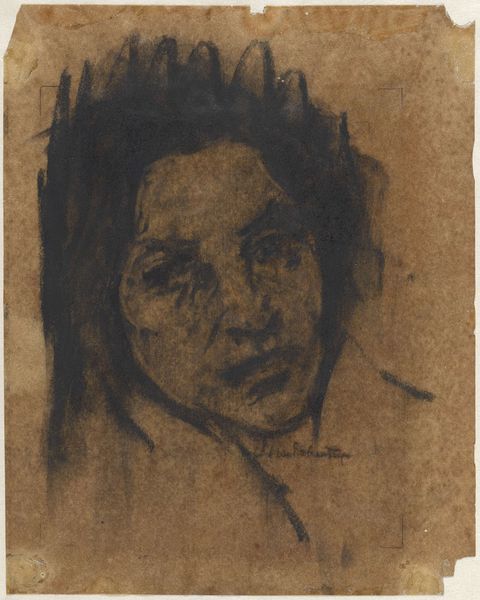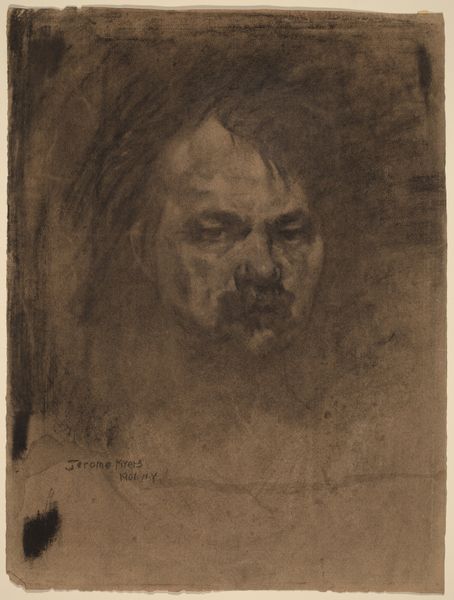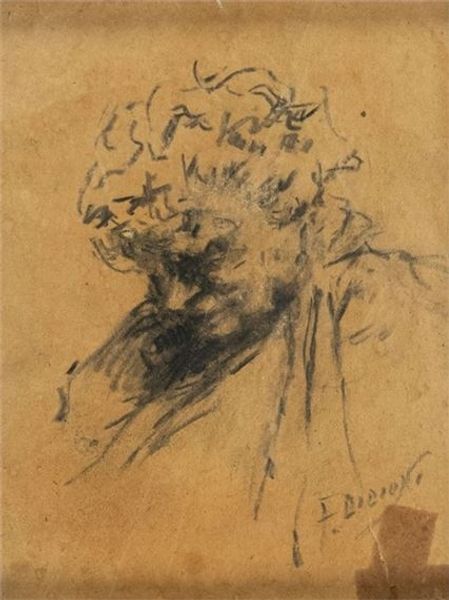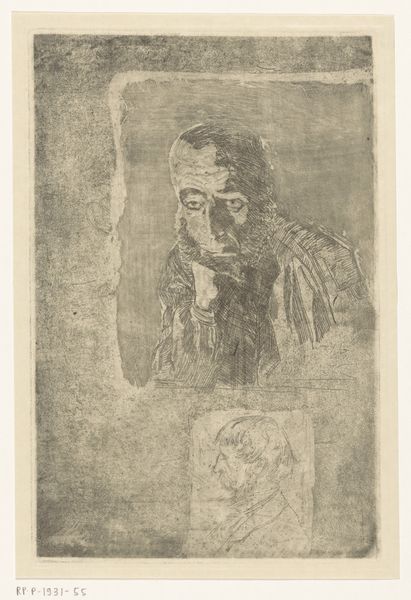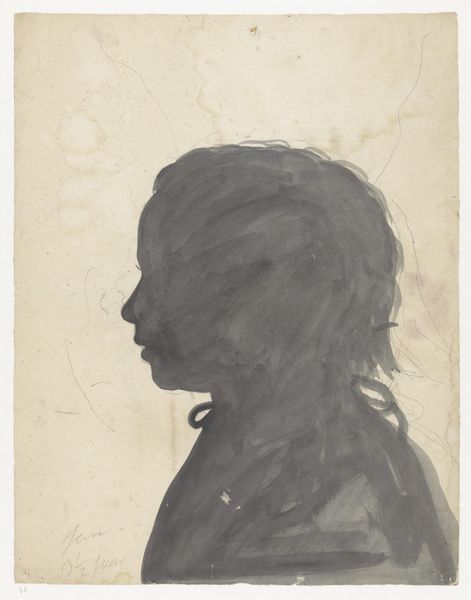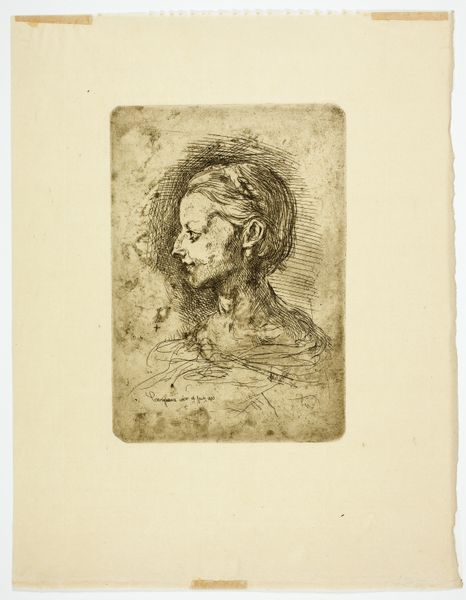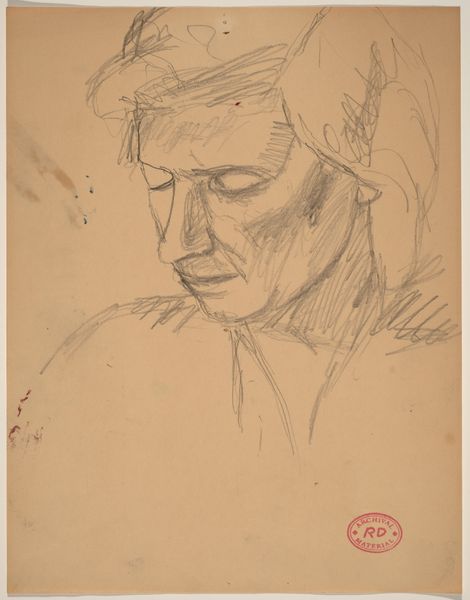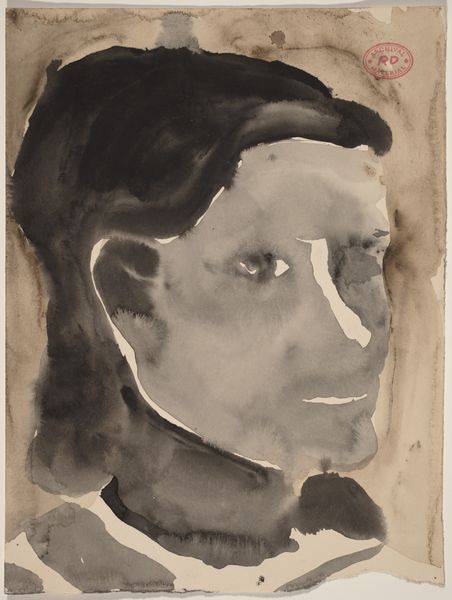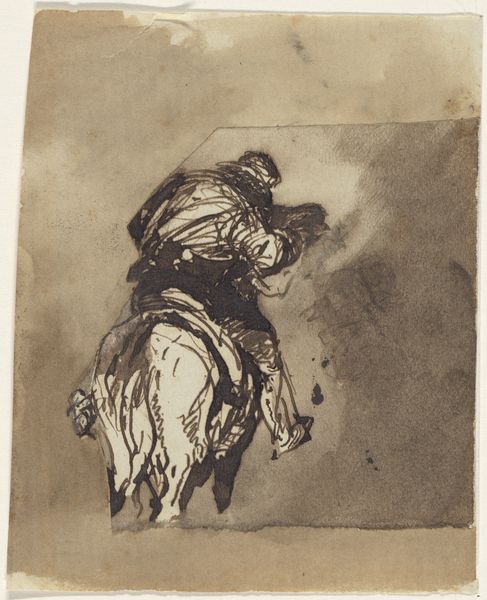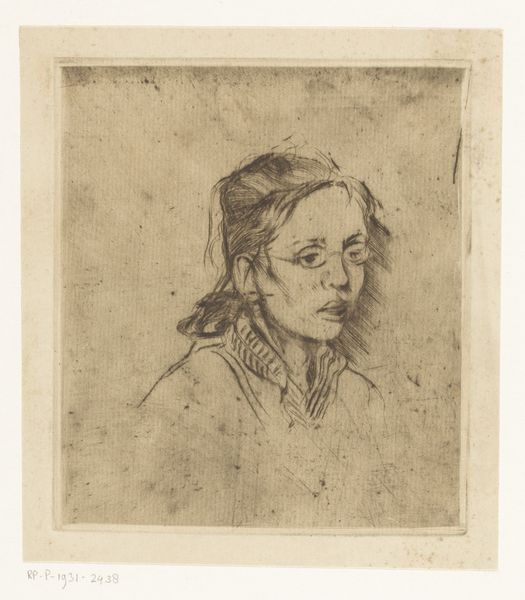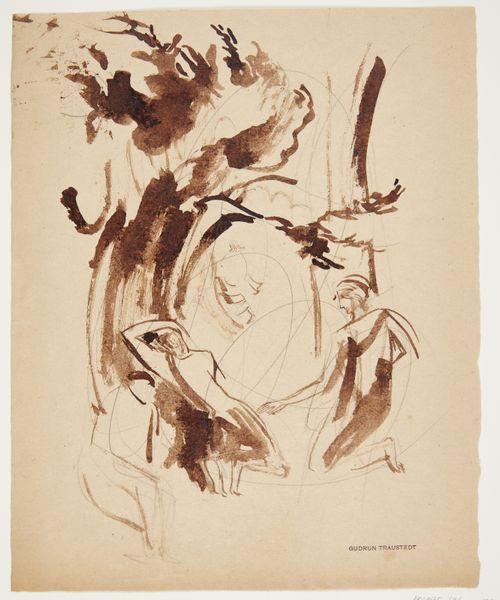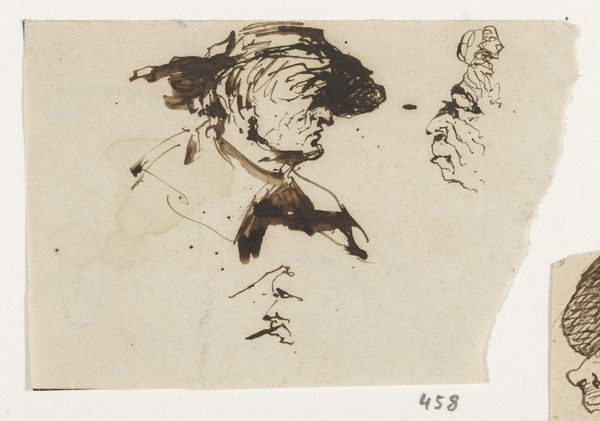
Dimensions: support: 546 x 378 mm
Copyright: CC-BY-NC-ND 4.0 DEED, Photo: Tate
Curator: Looking at Antonio Mancini's "Self-Portrait," currently housed at the Tate, I'm immediately struck by the artist's apparent turmoil—a raw, almost visceral quality. Editor: The earth-toned palette and the kinetic energy of the brushstrokes, though, suggest not turmoil but rather the artist in media res. There's a definite sense of creation in progress. How do you read this in terms of his broader body of work, and the socio-political context of his time? Curator: Mancini was known for his depictions of marginalized communities, often portrayed with deep empathy. This self-portrait can be seen as an extension of that, a vulnerable and honest exploration of his own identity amidst societal pressures. The inscription on the bottom right of the artwork adds further layers of meaning, hinting at personal reflections and perhaps a plea for understanding. Editor: That inscription adds another layer of complexity. The dynamism of the lines and the material itself—the support measuring 546 by 378 mm—create a powerful, immediate effect, almost like a fleeting snapshot of a soul. Curator: Precisely; and considering the social and political landscape of the late 19th and early 20th centuries, Mancini's willingness to expose his vulnerabilities becomes all the more significant. Editor: It offers a new perspective on how we can approach questions of identity and representation through visual art.
